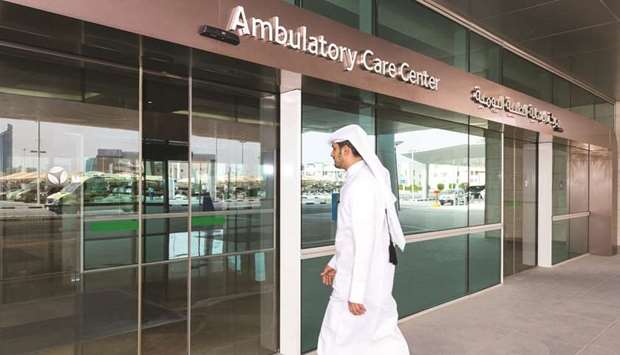*HMC’s Podiatric Service receives upwards of 20,000 diabetic foot care visits each year
Most complications of diabetes, including foot ulcers and amputations, can be prevented if patients have access to good healthcare and the appropriate information, said Dr Talal Khader Talal, senior consultant and head of Podiatric Services at Hamad Medical Corp (HMC).
“Diabetic foot problems are the result of two common complications of diabetes, reduced blood flow, and nerve damage," he explained.
"Diabetic foot disease is the leading cause of diabetes-related hospitalization and has mortality rates that are comparable to many cancers.
This condition creates a great burden on patients and their families,” said Dr Talal.
Nerve damage creates a diminished sensation in the feet and reduced blood flow results in the formation of cracks in the skin that allow bacteria to enter, leading to infection.
Managing diabetes while it is still in its early stages is the best way to prevent the development of diabetic foot disease, a condition Dr Talal says accounts for a large % of the patients seen in his clinic at HMC’s Ambulatory Care Center.
“Last year we recorded approximately 20,000 visits from patients with foot conditions related to diabetes.
Most of these patients had some form of ulcerations or cuts and 90% have diabetic neuropathy, a serious and common complication of type 1 and type 2 diabetes because it affects the patient’s ability to feel pain, so they are unaware that an ulcer has developed.
Without proper and prompt treatment, these conditions can quickly escalate,” Dr Talal said.
Pain is not a reliable symptom for diabetics, as many lose sensation to pain and could have advanced foot lesions without knowing it.

He says even a small cut can have drastic consequences, underscoring the importance of daily foot exams.
“Poor wound healing can lead to hospitalisation and amputation.
If an infection spreads to the bloodstream, it can be life-threatening.
While prevention is better than a cure, advanced wound care treatments that promote healing, like laser therapy, electrical stimulation, and artificial skin grafts, are helping many diabetics avoid serious complications.
These therapies have the potential to save limbs, restore mobility, and improve the lives of people with diabetes,” said Dr Talal.
HMC’s model of care for diabetics, which involves seeing patients more often so they can be closely monitored, and a walk-in service for patients with diabetic ulcers, are also major contributing factors for Qatar’s low rates of limb and foot amputations, compared to other countries.
Dr Talal said most patients come to his clinic too late, when their condition is considered moderate to severe and that it can take a minimum of three months for their condition to heal.
He says the goal is to educate patients and to keep their condition from escalating.
“A big part of caring for patients with diabetes is educating them, and their families, about how to manage their condition.
We want to keep patients who can be effectively treated in the outpatient setting out of the hospital.
For many patients, hospitalisation itself can result in worse outcomes and can leave the patient sleep-deprived and stressed.
Focusing on self-management education, coupled with good access to care, are priorities for us,” said Dr Talal.
Patients in Qatar have access to some of the best diabetes care in the world, with each diabetes patient treated at HMC being scheduled for a complete foot exam at least once a year."Patients are also provided with protective diabetic shoes and diabetic socks," added Dr Talal.

